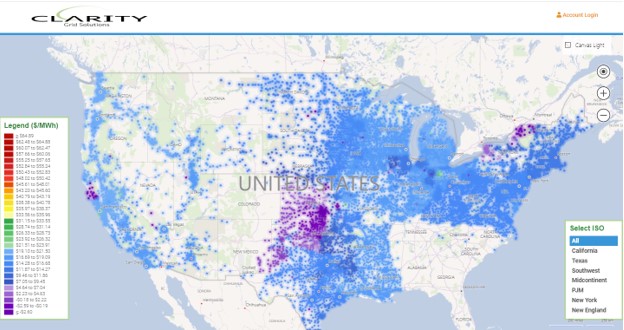Most of us are familiar with the standard fixed rate electricity contract. We assume that locking in a price for a year or two is safe and stable and while there are scenarios in which this is true, how much could you save if you took a little bit of risk? What if there was a way to see the circumstances where an index contract could save 20 to 40%? Clarity Grid Solutions’ platform combines and analyzes key data sets which allow us insight into wholesale electricity markets and where the instances of potential savings occur.
How does an index contract work for the consumer? The index is either a set of 24 different hourly prices set before the day of delivery (Next Day) or for short time periods (5 minutes to 1 hour) just prior to delivery (Real Time). Since each of these hourly prices are different, they must be matched to the customer’s consumption during that hour. In addition to energy, other wholesale charges must be included; e.g., ancillary, capacity, ISO charges, etc. Finally, the “last mile” of delivery must be calculated from a tariff determined by the unique Distribution Utility assigned to a customer based upon their location, usage profile, consumption, and peak demand among others. The only appropriate way for a consumer to compare their true electricity cost, under what is most likely a fixed price, to a wholesale delivered price, is by combining wholesale energy and these other charges, multiplied by the appropriate hourly usage, plus the Distribution Utility’s tariff.
Clarity Grid Solutions has done all the hard work to make this comparison easy. While other published prices represent HUBs, settlement indices, or specific blocks of hours, such as “peak”, they are wholly inappropriate for a customer bill comparison, therefore, Clarity Grid Solutions has initiated a “Clarity Index” for major cities and consumer types which may be directly compared to fixed prices in those areas, so consumers may gauge for themselves if the savings that consistently come with an index contract are worth a small increase in risk.




